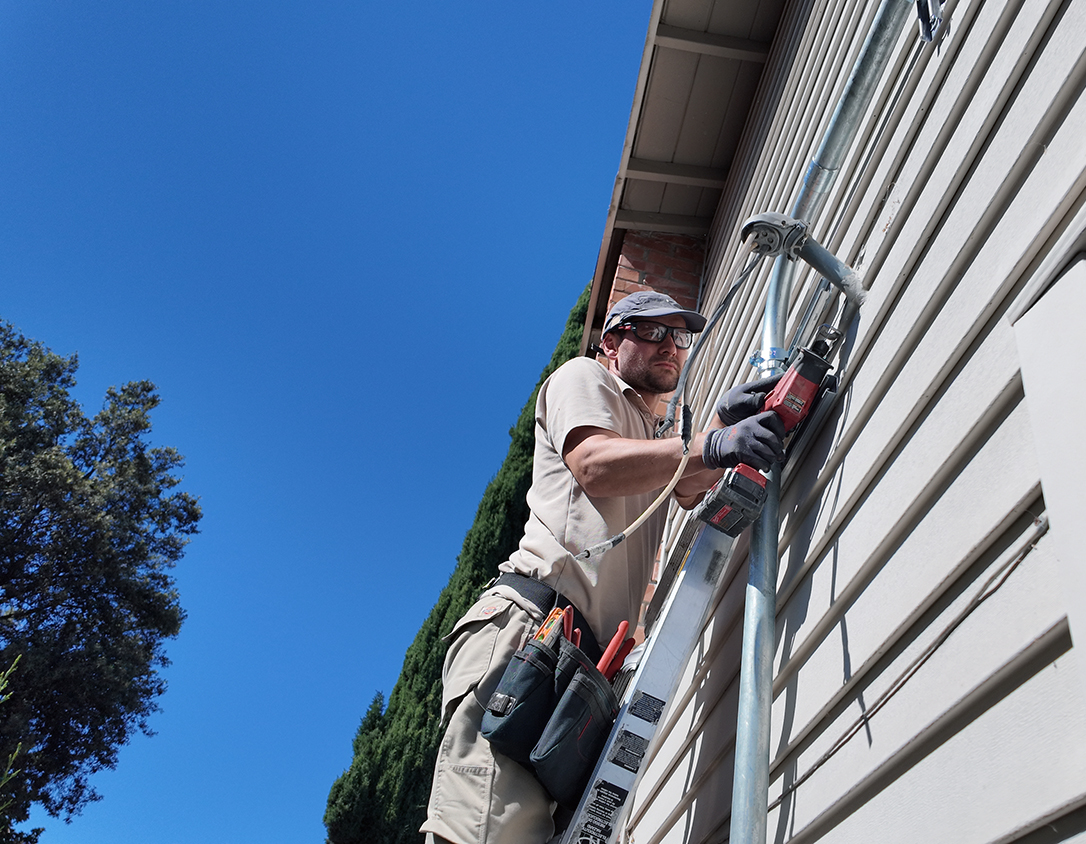
Outdoor outlets can turn your gardening and external decoration experience into something magical. But installation of this wonderful upgrade should be done carefully and safely. Installing an outdoor electrical outlet, especially with a weatherproof cover and GFCI protection, ensures your safety and convenience. If you have asked yourself something like "how much to install an outdoor outlet?" and "how to install outdoor electrical outlets with conduit?", simply read further and we will give you all the answers.
How Much to Install an Outdoor Outlet?
The cost to install outdoor electrical outlet varies based on several factors:
- DIY Installation: $25 – $75 (materials only)
- Professional Installation: $150 – $500 (labor + materials)
- New Circuit Installation: Additional $300 – $1,000 if running a new line from the panel
Factors affecting cost:
✔ Distance from the electrical panel
✔ Type of wiring used (Romex vs. THWN in conduit)
✔ Labor rates in your area
All the prices are taken on average. The final price is based on your own particular situation and factors. Contact a licensed electrician to get a more precise estimation.
How to Install Outdoor Outlet with Conduit?
Installing outdoor electrical outlet with conduit involves a few additional steps but offers more protection for the wiring. Here’s how how to install an outdoor outlet with conduit:
1. Plan the Conduit Route
Ensure the path for the conduit runs from your electrical panel or existing indoor outlet to the location of your new outdoor outlet. Keep in mind that PVC conduit is easier to install, while metal is more durable.
2. Install Conduit Fittings and Run the Wiring
Place the conduit and secure it with conduit fittings at each joint. You’ll need to strip the wires (hot, neutral, and ground) and feed them through the conduit. Conduit protects the wiring from physical damage and exposure to weather. This simple step prevents hazards like electrical fires and you can learn what else you can do for your home safety.
3. Wire the Outlet
Wire the GFCI outdoor outlet correctly. Ensure the hot wire is connected to the brass terminal, the neutral wire to the silver terminal, and the ground wire to the green screw.
4. Secure the Outlet and Cover
Once the outlet is wired, secure it in place inside the weatherproof electrical box. Then, install a weatherproof cover over the outlet to keep it safe from the elements.
5. Final Testing and Powering On
After you’ve finished with the installation, restore power at the circuit breaker and test the outdoor outlet to ensure it works. Press the test/reset buttons on the GFCI outlet to check for proper functionality.
Weatherproof Outdoor Power Outlet
Using a weatherproof outdoor power outlet is crucial for safety. These outlets are designed to withstand harsh conditions, such as rain, snow, and extreme temperatures. Ensure you choose an outlet that is rated for outdoor use and equipped with a weatherproof cover to prevent moisture from entering the wiring. And we have more useful tips on how to extend the life of your electrical system not only with weatherproof outlets.
Outdoor Outlet Wiring Diagram
Understanding the outdoor outlet wiring diagram is crucial when you wonder how to install an outdoor outlet. Below is a simplified diagram for installing a GFCI outdoor outlet:
- Hot wire (black) to brass terminal
- Neutral wire (white) to silver terminal
- Ground wire (bare) to green terminal
- GFCI Test/Reset buttons for safety functionality
Benefits of Installing an Outdoor Electrical Outlet
✔ Convenience: Easily plug in lawn equipment, lights, and appliances
✔ Safety: Reduces the need for long extension cords
✔ Property Value: Adds functionality to outdoor spaces
✔ Weatherproofing: GFCI protection prevents electrical hazards
Common Mistakes to Avoid When Installing an Outdoor Electrical Outlet

❌ Skipping GFCI protection (required for outdoor outlets)
❌ Using indoor-rated wiring instead of weatherproof THWN wire
❌ Not sealing the outlet box properly, leading to water damage
❌ Skipping the permit (some areas require an electrical permit)
Tools and Materials You'll Need
- GFCI (Ground Fault Circuit Interrupter) outlet
- Weatherproof outdoor electrical box
- Weatherproof cover (in-use cover)
- Electrical conduit and fittings (if surface mounting)
- Wire (12/2 or 14/2 Romex or THWN for conduit)
- Wire strippers
- Drill and hole saw
- Screwdrivers
- Voltage tester
- Circuit breaker (if adding a new circuit)
- Cable clamps
How to Install an Outdoor Outlet
Step 1: Turn Off Power
Shut down the circuit where the outlet will be installed. Use a voltage tester to confirm the wires are not live before proceeding.
Step 2: Choose the Installation Location
Select a location to add outdoor outlet. It should be near an existing indoor outlet or electrical panel to simplify wiring, but at least 12 inches above the ground to avoid water damage.
Step 3: Drill a Hole for the Wiring
If you're installing the electrical outlet for outside on an exterior wall, drill a hole that is a bit larger than your electrical cable or conduit. Be sure to angle the hole slightly downward to prevent water from entering.
Step 4: Run the Wiring
There are two main ways to run the wiring:
- From an existing indoor outlet: If you're tapping into an indoor outlet, run a 12/2 or 14/2 NM (Romex) cable through the wall to the outdoor location.
- From a breaker panel (new circuit): If adding a new circuit, run THWN wires through a conduit from the panel to the outdoor outlet.
If running conduit, use PVC or metal electrical conduit and secure it with appropriate fittings.
Step 5: Install the Outdoor Electrical Box
Use a weatherproof electrical box rated for outdoor use. If surface mounting, attach it securely to the wall with screws and anchors. If flush mounting, fit it into the wall opening and secure it.
Step 6: Connect the Wires to the GFCI Outlet
Connect your GFCI outlet according to the wiring diagram. If you're continuing power to another outlet, connect additional wires to the "LOAD" terminals.
Step 7: Install a Weatherproof Cover
Use an in-use weatherproof cover to protect the outlet from rain and moisture. This ensures the outlet remains functional even when something is plugged in.
Step 8: Restore Power and Test
Now bring the power back! Test the GFCI outlet by plugging in a device and pressing the test/reset buttons to ensure it's working properly. And to make the day even brighter check out why you should upgrade your electrical panel to a smart one!
Safety Tips
✔ Always turn off power before working with electrical wiring.
✔ Use GFCI outlets to prevent shocks and improve safety.
✔ Seal any gaps around the outlet with silicone caulk to prevent water intrusion.
✔ Follow local electrical codes—some areas may require permits or inspections.
Conclusion
Installing an outlet outside is a way to improve your home significantly. It gives the opportunity to enhance your home and garden decorations and simplify all outdoor jobs. But it should be installed with sticking to the standards to make usage of such outlets safe. It’s always better to get help from a professional electrician from FUSE when it comes to outdoor outlets. Visit our YouTube and Instagram pages to see what we are capable of!